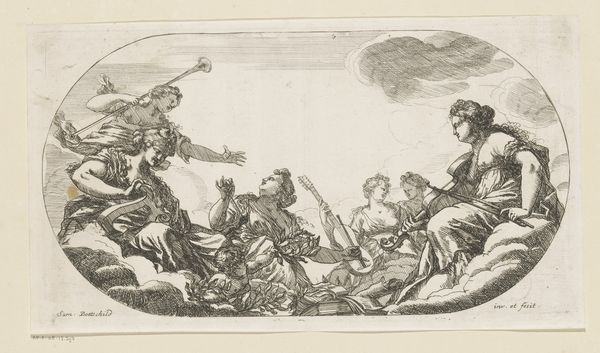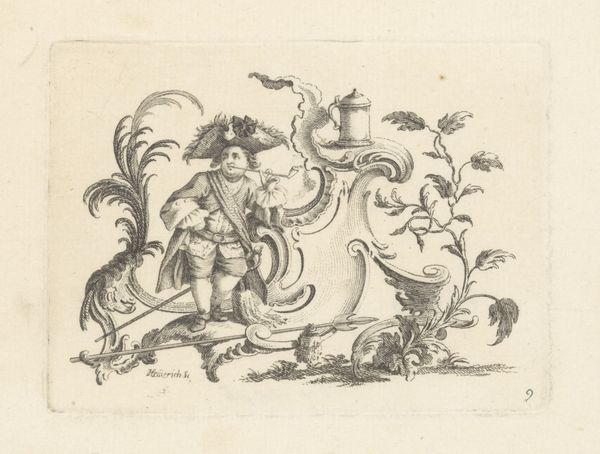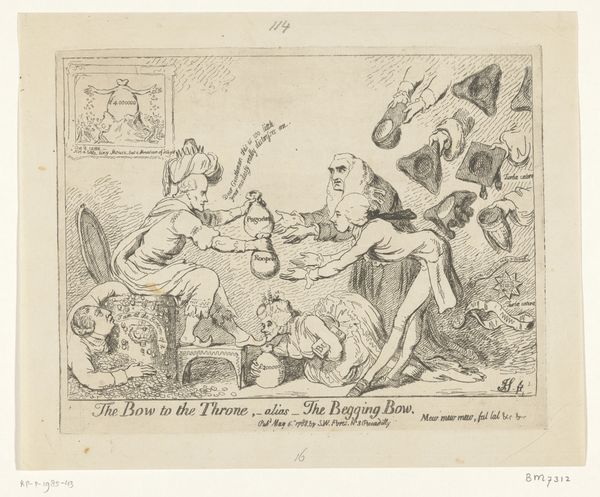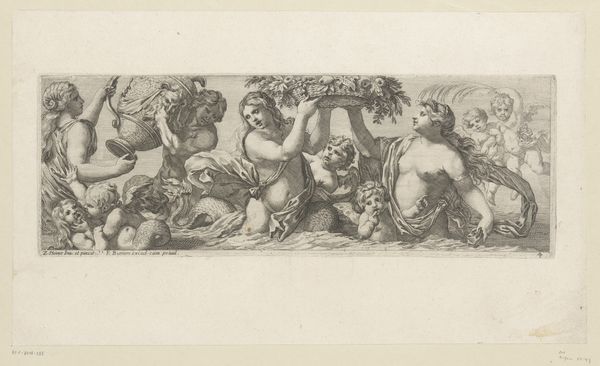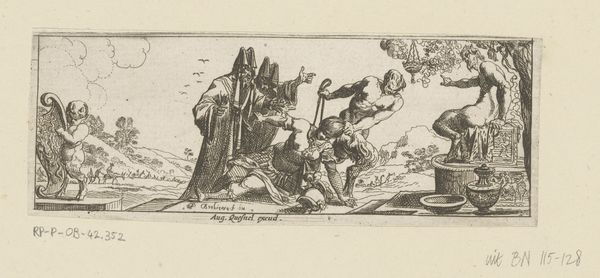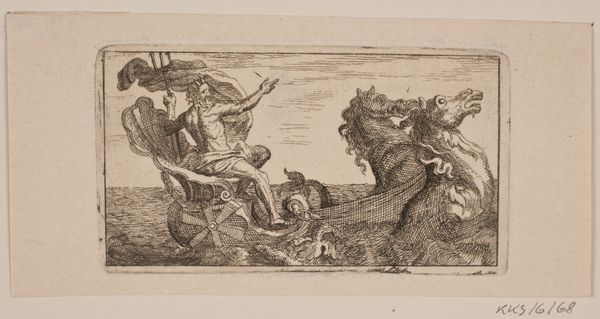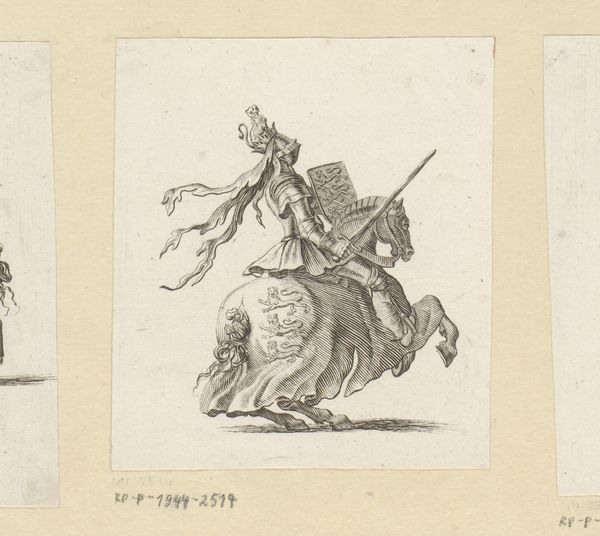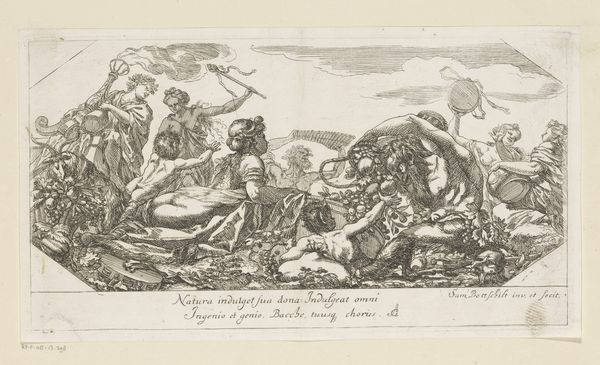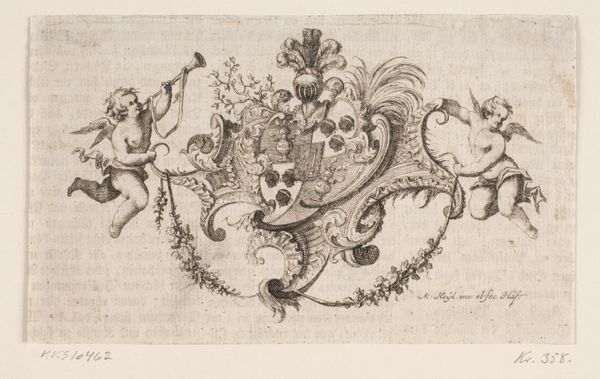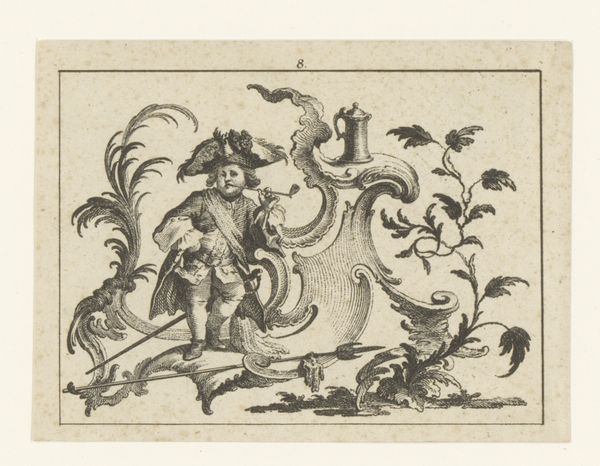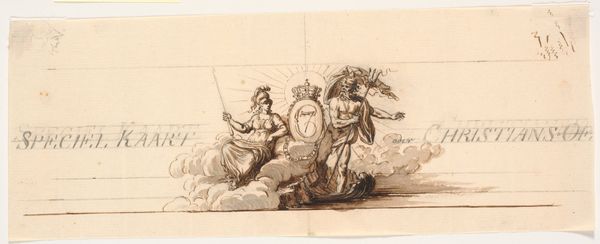
engraving
#
weapon
#
allegory
#
baroque
#
figuration
#
history-painting
#
engraving
Dimensions: height 92 mm, width 262 mm
Copyright: Rijks Museum: Open Domain
Curator: I'm immediately struck by the dynamism in this engraving – the composition practically explodes with energy. Editor: Indeed! We're looking at "Putti met harnas en wapens," crafted in 1693 by Samuel Bottschild. It’s held at the Rijksmuseum and showcases a distinctly Baroque flair. It really underscores a grand spectacle, doesn't it? Curator: Absolutely. The arrangement of the putti, their limbs and expressions caught in mid-motion, generates a palpable sense of theatre. Look at the spiraling composition and the meticulously rendered details—the billowing clouds, the texture of the armor, even the fine lines suggesting movement in the fabric. It's all quite virtuosic. Editor: It certainly points to a culture that celebrated military might, but rendered here with a playful twist. The cherubic figures almost deflate the seriousness typically associated with such themes. Curator: I'm intrigued by the visual interplay of these putti draped in weaponry, like stage props. The linear quality—the varying line weights, the hatching and cross-hatching—dictates how we perceive light, volume, and spatial depth, adding further texture. Editor: In its historical context, consider the role of allegory. Allegorical works were commonly commissioned by powerful families and individuals, where cherubs, arms, and amorini became metaphors in visual stories and assertions of their power and legitimacy. This image echoes broader artistic and political trends in Europe. Curator: It offers an almost satirical critique through the diminutive portrayal of strength—perhaps signaling that heroism itself may also be symbolic pageantry, and potentially vacuous. Editor: I think, viewed through that lens, its sharp composition becomes almost mocking. There's a tension between the aesthetic beauty and potential ideological critique—that is fascinating. Curator: Agreed. On second thought, the piece certainly allows for a great deal of semiotic excavation. The composition, viewed with attention to line and weight, tells one story. Meanwhile, cultural symbols introduce other interpretations that may ultimately change its perception. Editor: Indeed, whether read as an assertion of power or a critique, "Putti met harnas en wapens" presents the viewer a lasting perspective that sparks conversation about our image culture even today.
Comments
No comments
Be the first to comment and join the conversation on the ultimate creative platform.
